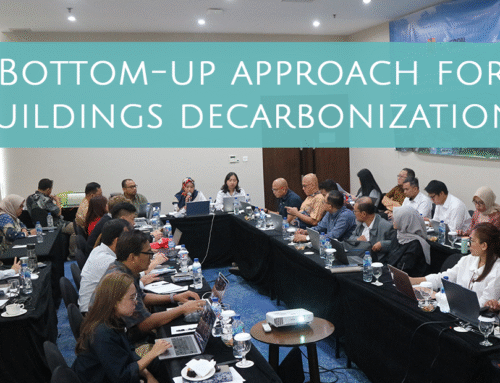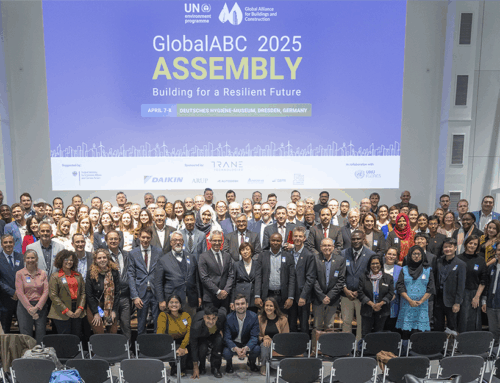In the lead-up to COP28, Kavya Gopal, GBPN Networks and Operations Manager attended a regional pre-cursor, the Asia Pacific Climate Week 2023, hosted in Johor, Malaysia. Although the buildings sector was noticeably underrepresented, with less than 10 of the 200+ sessions relating directly to buildings, three critical themes emerged in the sessions, shedding light on the human-centered messaging needed to drive change in the sector.
Cooling is an issue of social justice.
 The critical role of cooling in the broader context of social justice was emphasized at the event, notes Kavya.
The critical role of cooling in the broader context of social justice was emphasized at the event, notes Kavya.
“Cooling is an issue of social justice. Vulnerable communities around the world are the most impacted by heat stress, predominantly in the built environment. When we discuss building decarbonization, we have a unique opportunity to leverage cooling as an entry point for demand-side change,” Kavya said.
“We need to ramp up the use of passive and mechanical cooling while also increasing access to electrification in the Global South. “
This perspective showcases the relation of climate action and social equity, highlighting the need for inclusive solutions that address the disparate impacts of climate change on different communities.
Buildings determine our health.
Another crucial insight centered on the profound impact of buildings on human health.
“Only 20% of health outcomes are linked to medical care complexes. Our health is meaningfully determined by the places we work, play, and live in–our buildings. The project to decarbonize buildings globally is not simply a climate issue, but also a human health issue.”
This broadens the scope of the conversation, emphasizing that sustainable and healthy buildings are integral to fostering resilient communities and individuals. It reinforces the idea that investments in building decarbonization are not just about reducing carbon emissions but also about creating environments that promote well-being.
Buildings are the cause and the solution.
“The construction sector is responsible for 40% of global emissions and sustainable buildings are central to creating low-carbon cities. Most obviously, we need widespread adoption of energy efficiency measures, as well as scaled-up on-site renewable energy.”
Emerging conversation around the circularity of building materials offers the opportunity to not just drive down emissions but also costs to build affordable housing. This approach aligns with GBPN’s broader agenda of creating sustainable and resilient urban environments through evidence-based policy reform and bottom-up approaches.
Share This Story, Choose Your Platform!
Stay in touch with how we’re transforming the buildings sector
GBPN runs innovative building policy reform programs in key regions around the world that aim to tackle the climate emergency by decarbonising the buildings sector. Stay up to date with our newsletter.
Stay in touch with how we’re transforming the buildings sector
GBPN runs innovative building policy reform programs in key regions around the world that aim to tackle the climate emergency by decarbonising the buildings sector. Stay up to date with our newsletter.







